A 1977 nickel’s value ranges from face value to over $4,000 depending on condition and mint mark. Circulated coins are worth $0.10-$0.20, while uncirculated “Full Steps” varieties with clear Monticello steps command premium prices: MS65 Full Steps (~$80), MS66 Full Steps (~$750), and MS67 Full Steps ($4,150+). Coins were minted in Philadelphia (no mint mark), Denver (D), and San Francisco (S proof). The rare 1977-S proof in perfect condition sold for over $1,800. Error coins with doubled dies can increase value significantly. Professional grading is recommended to accurately determine worth and authenticate rare varieties.
That 1977 Jefferson nickel sitting in your change jar might be worth far more than five cents. While most circulated examples trade for $0.10 to $0.20, premium specimens with full steps designation have sold for over $4,000 at auction. Understanding the difference between common pocket change and valuable collectibles requires knowing what grades, mint marks, and rare varieties to look for in these 42-year-old coins.
Understanding the 1977 Jefferson Nickel Design and Production
The 1977 Jefferson nickel maintains the classic design introduced in 1938, featuring Thomas Jefferson’s portrait on the obverse and his Monticello estate on the reverse. Felix Schlag’s original design remained unchanged during this period, making identification straightforward for collectors.
Production in 1977 occurred at three facilities. The Philadelphia Mint produced coins without a mint mark, while the Denver Mint added a “D” designation on the obverse, right of Monticello. The San Francisco Mint struck “S” marked coins exclusively for proof sets sold to collectors. Total mintage reached approximately 585 million pieces combined from Philadelphia and Denver, making these nickels readily available in circulation even today.
The composition consists of 75% copper and 25% nickel, weighing 5 grams with a diameter of 21.2 millimeters. Unlike earlier wartime nickels from 1942-1945, these contain no silver content, so their base metal value remains minimal regardless of condition.
1977 Philadelphia Nickel Value (No Mint Mark)
Philadelphia struck the majority of 1977 nickels without any identifying mint mark. Standard circulated examples trade between face value and $0.20, reflecting minimal collector demand for worn specimens.
The value equation changes dramatically for uncirculated pieces, particularly those achieving high Mint State grades:
| Grade | Value Range |
|---|---|
| MS-60 to MS-63 | $0.50 – $2.00 |
| MS-64 | $3.00 – $8.00 |
| MS-65 | $12.00 – $25.00 |
| MS-66 | $45.00 – $95.00 |
| MS-67 | $350.00 – $850.00 |
The “Full Steps” designation transforms these values significantly. This special variety requires five or six complete, unbroken horizontal lines on the Monticello steps on the reverse. Strike quality varies tremendously, and fewer than 5% of uncirculated 1977 nickels qualify for this designation.
Full Steps examples command substantial premiums:
- MS-65 Full Steps: $80 – $125
- MS-66 Full Steps: $750 – $1,200
- MS-67 Full Steps: $4,150 – $5,500
A 1977 Philadelphia nickel graded MS-67 Full Steps sold for $4,700 through Heritage Auctions in January 2023, demonstrating the significant premiums collectors pay for exceptional strike quality combined with pristine surfaces.
1977-D Denver Nickel Values
Denver’s production mirrored Philadelphia’s output, with the distinguishing “D” mint mark appearing on the obverse. Circulated pieces carry identical values to their Philadelphia counterparts at $0.10 to $0.20.
Uncirculated Denver nickels follow similar price patterns:
| Grade | Value Range |
|---|---|
| MS-60 to MS-63 | $0.50 – $2.00 |
| MS-64 | $3.00 – $9.00 |
| MS-65 | $15.00 – $30.00 |
| MS-66 | $55.00 – $110.00 |
| MS-67 | $400.00 – $950.00 |
Full Steps Denver nickels demonstrate comparable scarcity and value to Philadelphia strikes. Finding well-struck examples proves challenging because die wear at the Denver facility often resulted in weakly defined steps.
Denver Full Steps pricing:
- MS-65 Full Steps: $90 – $140
- MS-66 Full Steps: $800 – $1,350
- MS-67 Full Steps: $4,250 – $5,800
The highest recorded sale for a 1977-D Full Steps nickel reached $5,175 at a Stack’s Bowers auction in March 2023 for an MS-67 specimen with exceptional eye appeal and pristine step definition.
1977-S Proof Nickel Worth
San Francisco exclusively produced proof nickels for collector sets in 1977, with no business strikes bearing the “S” mint mark. These proof coins feature mirror-like fields and frosted devices, created through special polishing techniques and multiple strikes with specially prepared dies.
Standard 1977-S proof nickels in original packaging typically sell for $2 to $5, depending on the complete proof set’s condition. Individual coins graded by professional services command higher prices:
| Grade | Value Range |
|---|---|
| PR-65 | $3.00 – $6.00 |
| PR-66 | $5.00 – $10.00 |
| PR-67 | $8.00 – $18.00 |
| PR-68 | $25.00 – $65.00 |
| PR-69 | $150.00 – $350.00 |
| PR-70 | $1,800 – $2,500 |
The gem proof market centers on pristine PR-69 and perfect PR-70 examples. A 1977-S nickel graded PR-70 Deep Cameo by PCGS sold for $1,880 through Great Collections in November 2023. The Deep Cameo designation indicates exceptionally strong contrast between frosted devices and mirror fields, representing the finest strike quality achievable.
Rare Errors Worth Searching For
Error coins from 1977 occasionally surface, though major varieties remain scarce compared to other years. Doubled die varieties exist but lack the dramatic doubling seen in more famous error years.
Off-Center Strikes: Coins struck partially outside the collar die show missing portions of the design. Values depend on the percentage off-center and whether the date remains visible. A 10% off-center with full date brings $25 to $50, while 50% off-center examples reach $150 to $300.
Broadstrikes: These errors occur when the retaining collar fails, allowing the planchet to expand beyond normal diameter. Values range from $20 for minor broadstrikes to $100 for dramatic examples.
Clipped Planchets: Missing segments of metal create distinctive curved or straight clips. Straight clips typically sell for $15 to $35, while curved clips bring $10 to $25 depending on size.
Wrong Planchet Errors: Extremely rare instances exist where nickels were struck on dime or cent planchets. These major errors command $500 to $2,000 when authenticated.
Die Cracks and Cuds: Progressive die deterioration creates raised lines or blob-like features. Minor cracks add $5 to $15 in value, while major cuds affecting significant portions of the design reach $50 to $150.
No major doubled die varieties have been documented for 1977 nickels in professional error registries as of 2024, unlike the famous 1942-D doubled die or 1971 no-S proof errors. Always verify suspected errors through professional authentication before assuming significant value.
Identifying Full Steps and Grading Your 1977 Nickels
The Full Steps designation requires careful examination under magnification. Hold the coin at an angle under bright light to clearly see the Monticello steps on the reverse. Count the horizontal lines running across the base of the building—you need five complete, unbroken lines for Full Steps designation.
Common strike weaknesses include:
- Incomplete center steps where metal flow didn’t fully fill the die
- Merging of step lines where individual separation disappears
- Bag marks or contact marks crossing the step area
Even minor imperfections disqualify a coin from Full Steps status. This strict standard explains why only 3-5% of uncirculated 1977 nickels achieve this designation despite appearing sharp to casual observation.
For self-grading, examine these key areas:
Obverse checkpoints: Jefferson’s cheekbone shows wear first, followed by the hair above his ear. Uncirculated coins display complete detail with full luster across these high points.
Reverse checkpoints: The pillars and roof detail on Monticello demonstrate strike quality. Weakly struck coins show mushiness in these architectural features even without circulation wear.
Mint State grades from MS-60 to MS-70 depend primarily on surface preservation. MS-60 coins show numerous bag marks and dull luster, while MS-67 and higher display pristine surfaces with minimal imperfections visible even under magnification.
Professional grading through PCGS or NGC costs $20 to $40 per coin for standard service, worthwhile for specimens potentially grading MS-66 or higher, or any coin showing possible Full Steps designation.
Maximizing Value When Selling Your 1977 Nickels
Building value starts with proper storage and handling. Never clean coins—doing so removes microscopic surface detail and destroys collector value even for uncirculated pieces. Store coins in inert holders like Mylar flips or certified slabs to prevent environmental damage.
For common circulated examples worth $0.10 to $0.20, selling to dealers proves impractical due to handling costs. Consider holding these until accumulating quantity or including them in larger collection sales.
Uncirculated rolls of 40 coins sometimes command premiums if original bank-wrapped. Unopened Denver or Philadelphia rolls from 1977 sell for $15 to $30 depending on market demand, though individual coin quality remains unknown until opened.
Potential Full Steps candidates justify professional grading investment. Submit suspected examples to PCGS or NGC, requesting Full Steps review. The designation fee adds approximately $15 to standard grading costs but enables premium pricing if awarded.
Auction consignment works best for premium specimens grading MS-66 or higher, especially Full Steps examples. Heritage Auctions, Stack’s Bowers, and Great Collections accept individual coins meeting minimum value thresholds around $100. Auction exposure to specialized Jefferson nickel collectors maximizes competitive bidding.
Online marketplaces like eBay suit mid-range pieces valued between $10 and $100. Include clear photographs showing both sides plus close-ups of the steps area. Accurate grading descriptions prevent returns and negative feedback.
Local coin shops offer immediate payment but typically pay 50-70% of retail value for raw (ungraded) coins. This discount reflects their resale costs and uncertainty about precise grade without certification. For certified coins, expect 70-85% of current market prices depending on demand.
Building a Complete 1977 Nickel Collection
Assembling a complete 1977 date set requires just three pieces: Philadelphia (no mint mark), Denver (D), and San Francisco proof (S). Budget collectors can complete this set for under $10 in circulated to average uncirculated condition.
Serious collectors pursue higher-grade examples, targeting MS-65 or better from each mint. This upgraded set costs approximately $50 to $100, focusing on above-average strike quality and surface preservation.
The ultimate 1977 collection includes Full Steps examples from both business strike mints plus a PR-69 Deep Cameo proof. Budget $2,000 to $3,000 for MS-66 Full Steps pieces plus a premium proof. Elite collectors seeking MS-67 Full Steps specimens should anticipate $8,000 to $12,000 for the complete trio.
Registry set competition through PCGS or NGC drives advanced collecting. These platforms rank collections based on grade points, encouraging pursuit of the finest known examples. Current registry leaders for 1977 Jefferson nickels feature multiple MS-67 and MS-68 specimens with Full Steps designation.
Consider adding representative error coins to enhance your collection’s diversity. A minor off-center strike or die crack example adds interesting variety for $20 to $50, demonstrating production realities at the mint.
Your 1977 nickels deserve closer examination before spending them or setting them aside as common pocket change. Check those Monticello steps carefully—you might be holding a Full Steps variety worth hundreds or thousands of dollars. Professional grading unlocks maximum value for premium specimens, while even circulated examples contribute to complete date collections. Start searching your change today, and remember that exceptional strike quality combined with pristine preservation transforms ordinary nickels into significant numismatic prizes.
You may be interested:
- 1859 Indian Head Penny Coin Value Complete Errors List And No Mint Mark Worth Guide For Collectors
- 1911 V Nickel Coin Value Guide Complete Errors List And No Mint Mark Worth Today
- 1902 Dime Coin Value Complete Errors List With O S And No Mint Mark Worth Guide
- 1788 Quarter Coin Value Complete Guide Errors List And D S P Mint Mark Worth Revealed
- 1776 To 1976 Bicentennial Half Dollar Coin Value Complete Errors List And What Your D S And No Mint Mark Coins Are Actually Worth
- 1990 Penny Coin Value Errors List How D S And No Mint Mark Pennies Are Worth Thousands Of Dollars

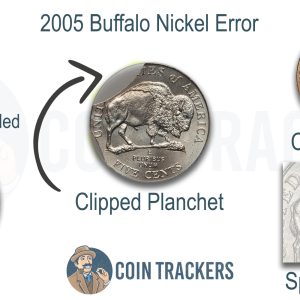
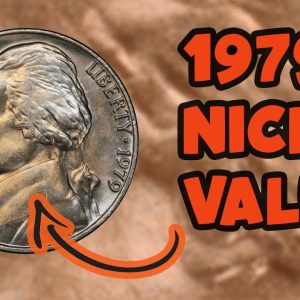
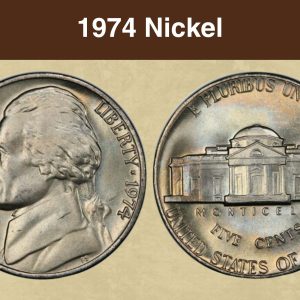
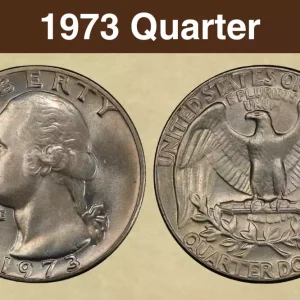
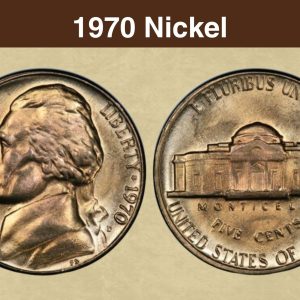
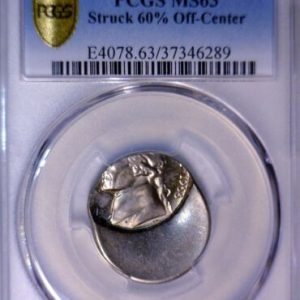
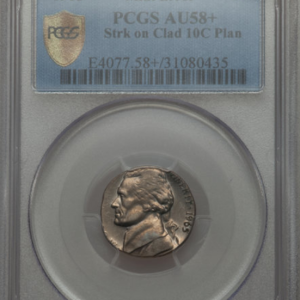
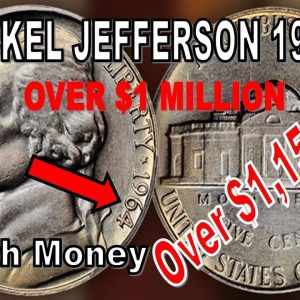
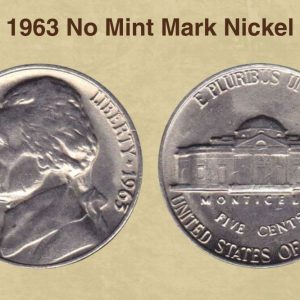
Are nickels from 1977 worth anything?
A 1977 nickel’s value varies from its face value to hundreds or thousands of dollars, depending on its condition and whether it’s a rare “full steps” variety. Circulated coins are worth about $0.10 to $0.20, but uncirculated “full steps” coins, which have a rare, high-grade condition with clear steps on the reverse, can be worth significantly more. For example, a 1977-S proof nickel in perfect condition sold for over $1,800, and other high-grade full-step examples have sold for over $4,000.
What nickel error to look for?
Key nickel errors to look for include doubled dies, where design elements are doubled due to die strikes, off-center strikes, where the coin is struck outside its intended position, and mint mark errors, such as doubled or missing mint marks. Other valuable errors are speared bison on 2005 nickels, the 1943 double die Jefferson nickel, and 1937-D Buffalo nickel three legs.
How much is a 1977 No mint mark worth?
No mint mark (Philadelphia): are the most common. A 1977 no mint mark found in your change is probably worth 1 cent. But in pristine, red condition graded MS65 or better, these can go for $5 to $15.